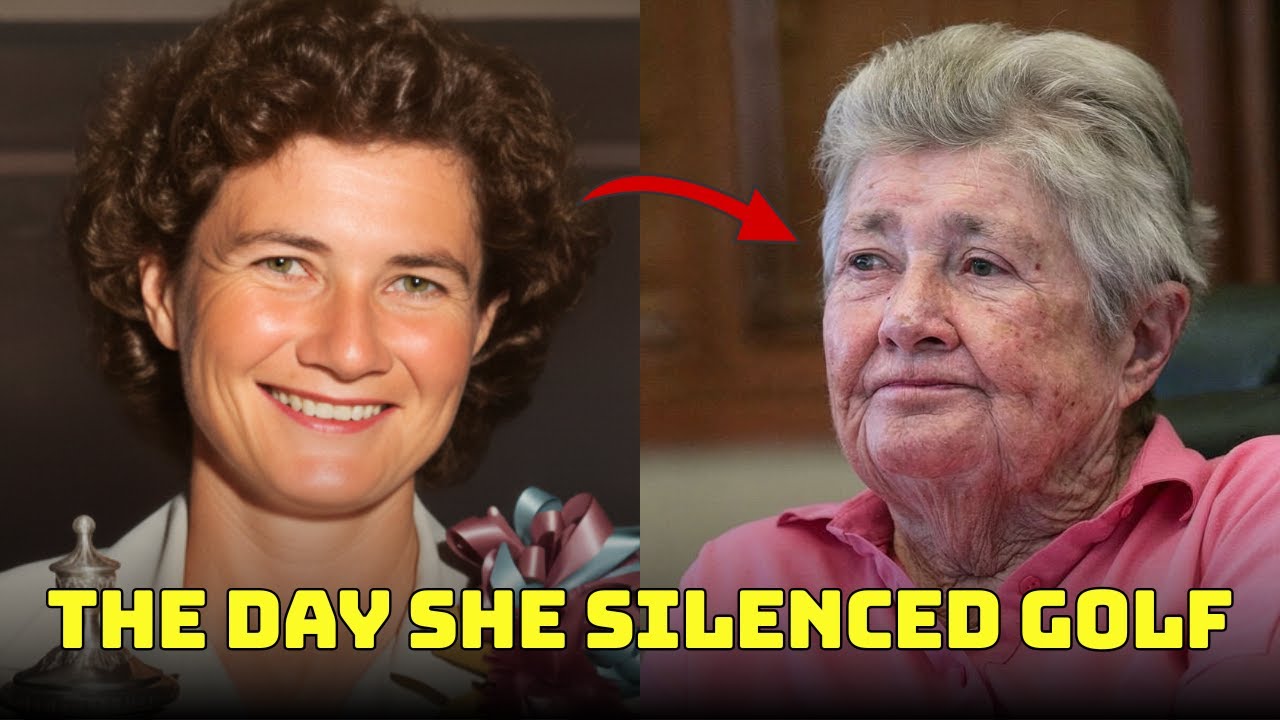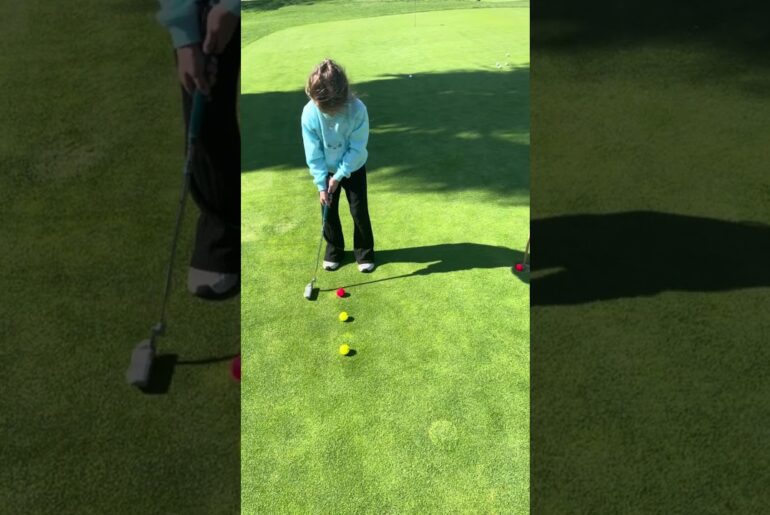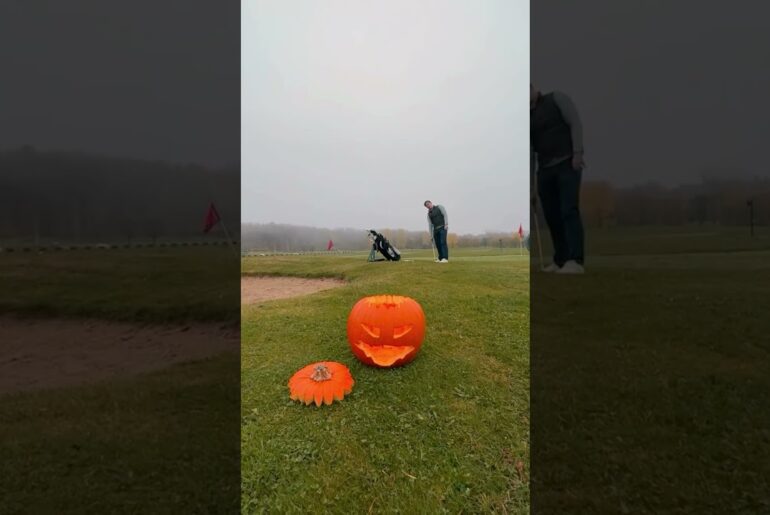The Golf World Hated Louise Suggs… Until She Beat Babe Zaharias by 14 Shots
She was once the most misunderstood woman in golf — quiet, disciplined, and feared for her precision. But when Louise Suggs defeated Babe Zaharias by fourteen shots, she didn’t just win a championship; she changed the sport forever. This is the story of Louise Suggs — the legend who proved that silence can be the loudest sound in golf.
#golfers #golferslife #LouiseSuggs
Copyright Disclaimers:
Our content is used in adherence to YouTube’s Fair Use guidelines. This may include copyrighted video clips and images used under U.S. Copyright Act Section 107 for commentary, news reporting, educational purposes, and more, without specific authorization from copyright holders.
She didn’t laugh to win hearts. She didn’t talk to be liked. And for a long time, the golf world didn’t want her around. They called her cold, unapproachable, too serious. A woman who treated golf like war while everyone else saw it as a game. She refused to flirt with fame, refused to bend her standards, and refused to smile when victory demanded humility. But she could do something no one else could. strike a golf ball so pure that even Ben Hogan, the ultimate craftsman, said her swing was as perfect as it gets. She didn’t need charisma. She had precision. She didn’t seek love. She earned respect. And when the most beloved woman in American sports, Babe Zaharas, stood across from her at the 1949 US Women’s Open, the one they called, made history burn. Louise Suggs won that championship by 14 shots. the largest margin the tournament had ever seen. A record that still stands today. It wasn’t just a victory. It was defiance. Quiet, exact, and absolute. For the first time, silence was louder than applause. This is Louise Suggs, the woman the golf world once hated until she changed it forever. She was born in 1923 in a quiet town outside Atlanta where the air smelled of pine and red clay and the sound of a ball striking wood was part of daily life. Her father, a former baseball player, managed a small golf course in Lithia Springs. He believed that golf, like life, revealed a person’s character long before it revealed their talent. While other children played by the creek, Louise wandered the fairways alone, dragging a golf bag twice her size. Her father didn’t teach her softness. He taught her discipline. If you hit it wrong, he’d say, it’s not the wind, it’s you. Those words would become her moral compass. The Georgia summers were brutal, yet she stayed under the sun until her hands blistered. There were no female champions to idolize, no women’s tour to dream of. What existed was a boy’s world and a young girl who didn’t seem to care that she didn’t belong. Louise wasn’t loud, nor was she eager to please. She was methodical, almost mathematical in her practice. Every swing had to feel identical. Every movement had to earn its place. In that pursuit of precision, she discovered something rare. Control gave her peace. The fairway became her refuge, a sanctuary where silence was not loneliness, but power. By 17, she had already conquered George’s amateur field, defeating women twice her age. Yet even then, she showed no celebration, no rush of emotion, only a quiet nod to her father, as if saying, “I did what I was supposed to.” In those early years, she wasn’t chasing trophies. She was building armor. One swing, one blister, one lesson at a time. Golf wasn’t a pastime for Louise Suggs. It was a ritual. By her late teens, she no longer practiced to improve. She practiced to understand. Each swing became a conversation between her and the laws of nature. The weight of the club, the sound of the strike, the flight of the ball, everything had to align with an invisible truth she was determined to find. While other young women in Georgia were dreaming of dances and dresses, Louise dreamed of hitting the perfect shot. She practiced until the soles of her shoes wore thin and her hands bled. Her father often had to call her off the range after sunset when the fireflies outnumbered the golf balls. There was no coach shouting instructions, only her own mind whispering again. What separated her from others was not power, but clarity. She never chased distance. She chased purity. Her swing was not flamboyant. It was simple, efficient, and eerily consistent. Years later, even Ben Hogan would say her motion was as close to perfection as one could get. Her rivals called her relentless. They were right. She would hit the same shot hundreds of times until it was silent. No strain, no force, no sound except the clean click of impact. That sound to her was the language of faith. By the time she entered the National Amateur Circuit, her reputation had already spread. A quiet girl from Georgia who hit like a machine and thought like a philosopher. She wasn’t there to win friends or applause. She was there to prove that precision could be poetry. That golf in its purest form was not about beating others, but mastering oneself. The 1940s were a decade of quiet revolutions in golf. And somewhere between the wars end and the rebirth of the sport, a young woman from Georgia began rewriting its rules. Louise Suggs entered the amateur stage with the calm of someone who already knew who she was. She wasn’t there to smile for the cameras. She was there to win. In 1947, she captured the US Women’s Amateur Championship with clinical precision, dismantling opponents who underestimated her calm. The next year, she sailed across the Atlantic and conquered the British ladies amateur, becoming one of the few Americans ever to claim both crowns. Reporters were surprised. Louise wasn’t. To her, excellence was not a surprise. It was the standard. She didn’t talk about dreams. She talked about execution. To her, talent meant little without discipline. In an era when women golfers were often treated as novelty acts, she carried herself like a soldier of the game, sharp, serious, unbending, and people started to notice. Her victories were not loud, but they were absolute. While others celebrated, Louise quietly packed her clubs and moved to the next challenge. She understood that glory fades, but reputation endures. Each win became another stone in the foundation of a career that was no longer possible to ignore. By the time she turned professional in 1948, Louise Suggs had already become a symbol not of charm or fame, but of precision, control, and an almost unsettling focus. She didn’t seek the spotlight. She simply played so well that the spotlight had no choice but to find her. Fame came slowly for Louise Suggs, and so did resentment. By the early 1950s, she was winning too often, too easily, and too quietly for a world that preferred its women smiling and gracious. The crowds adored Babe Zaharas, the golden heroine of American sport, loud and charismatic. Louise was her opposite, disciplined, contained, a figure of calm, precision in a culture that celebrated charm. The press began to draw lines between them. Babe, the entertainer, Louise, the ice queen. Every word she didn’t say became a rumor. Every silence became a story. Reporters wrote that she lacked warmth, that she didn’t know how to play the game outside the ropes. But Louise wasn’t interested in playing any game except golf. Their rivalry became legendary. When Babe laughed, Louise focused. When Babe performed, Louise executed. They rarely exchanged more than a few words, and when they did, the tension could be felt across the fairway. Louise would later recall that she respected Babe’s ability, but she would never bow to her shadow. In truth, they were two sides of the same coin. Both fierce, both brilliant, both unwilling to yield. The establishment didn’t know how to handle her. Sponsors hesitated. Tournament organizers whispered that she was difficult. What they meant was that she couldn’t be controlled. She refused to appear in promotional stunts that diminish the seriousness of the sport. She refused to fake a smile for photographs that made golf look like a novelty. For that, she paid a price. Invitations slowed. Headlines cooled. She became the woman who was too cold to love. But behind that label was a truth the public didn’t see. That it takes a certain kind of solitude to be unbreakable. And when Louise Suggs stepped onto the tea box at the 1949 US Women’s Open, the silence around her wasn’t rejection anymore. It was anticipation, the kind that comes before a storm. It was the summer of 1949, and the fairways of Prince George’s country club shimmerred under a heavy Maryland sun. The US Women’s Open had gathered the greatest players of the era, and all eyes were on Babe Zaharas, the favorite, the showwoman, the champion of hearts. Few expected the quiet woman from Georgia to challenge her. Even fewer expected what came next. Louise Suggs didn’t look like someone ready to rewrite history. She didn’t pose for the photographers, didn’t flash a smile for the crowd. She simply walked to the first tea, adjusted her glove, and began. Her swing was smooth, precise, unhurried. A line of poetry written in motion. The sound of impact was crisp, almost arrogant in its confidence. Ball after ball found the fairway, and as the rounds passed, her lead widened. By the end of the second day, whispers filled the clubhouse. She’s leading by 10. Zaharas looks rattled. Reporters began to sense that something historic was unfolding. Not just a victory, but a correction. The woman they had called cold was delivering the purest exhibition of golf they had ever seen. When the final putt dropped, the score was undeniable. Louise Suggs 9 under par. Babe Zaharas, five over. A 14-shot difference, the largest margin in the tournament’s history. The gallery, stunned, offered polite applause as if unsure whether they had just witnessed genius or rebellion. Louise didn’t cheer or wave. She picked up her ball, nodded once, and walked off the green. To her, victory wasn’t a performance. It was proof. the proof that discipline could be beautiful, that focus could be feminine, and that silence could roar louder than any crowd. That day, the golf world stopped calling her an outsider. They started calling her something else, a champion they would never forget, even if she never asked to be remembered. Victory did not soften Louise Suggs. If anything, it made her sharper. After the US Women’s Open, she could have coasted on fame, but instead she turned towards something bigger, protecting the integrity of the game she loved. In 1950, alongside 12 other pioneers, she co-ounded the Ladies Professional Golf Association. To them, it wasn’t a business venture. It was a declaration. Women would no longer play in borrowed spaces or for borrowed respect. Louise became one of its fiercest custodians. As president of the LPGA, she demanded standards, dress codes, etiquette, and behavior that reflected professionalism. Many thought she was too strict, but she understood that every careless act could be used as an excuse to dismiss women’s golf entirely. For her, discipline wasn’t control. It was survival. She traveled from tournament to tournament in a small car packed with clubs, scorecards, and conviction. Sometimes she served as player, organizer, and rules official all in the same week. The public saw trophies. Louise saw the scaffolding of a future sport being built with her own blistered hands. Her peers occasionally called her difficult. She called it doing things properly. When disagreements arose, she didn’t argue loudly. She simply outworked everyone until silence returned. Her presence carried weight not because she demanded obedience, but because she embodied what golf was supposed to mean, honesty, precision, and respect for the craft. In an era when women were still fighting for space in nearly every field, Louise Suggs didn’t ask for permission. She built the room herself and held the door open for others to walk through. And long after she put down the club, the game still bore the quiet discipline of her touch. As the decades passed, the spotlight shifted to new champions. But Louise Suggs remained a constant presence. Not as a star demanding attention, but as a guardian, ensuring the game never lost its soul. She no longer needed to win tournaments to prove her worth. Her name had already become part of golf’s foundation. In her later years, she lived simply in Florida, teaching young players who often had no idea they were learning from one of the architects of women’s golf. She would correct a grip, adjust a stance, and tell them softly that golf was about honesty, not perfection, but truth. Many remembered that her words carried more weight than any medal. Recognition eventually found her, even if it arrived decades late. The LPGA named its Rookie of the Year award after her, and the golf world began to realize that without Louise, their game would have looked very different. She never bragged, never claimed credit. She just smiled faintly when asked about her legacy and said, “I only did what needed to be done.” Louise Suggs passed away in 2015 at 91, leaving behind a sport she had shaped with her discipline and silence. Her greatness wasn’t measured in trophies alone, but in the professionalism, respect, and opportunities that grew from the seeds she planted. She had built a future where women could play proudly, equally, and without apology. Louise Suggs was never the kind of legend who demanded applause. She didn’t build her story on charisma or spectacle, but on precision and purpose. In every era, golf has its heroes. The ones who talk, who entertain, who glow under the camera. Louise belonged to a rarer kind. The ones who let their silence speak for them. Her journey was never easy. She faced indifference, misunderstanding, and the weight of expectations that told her to smile when she wanted to fight. Yet, she endured without complaint, proving that conviction can be louder than charm. Her legacy was not carved by the crowd’s affection, but by the respect of those who understood what true mastery costs. Today, every woman who walks a fairway in confidence, every young player who swings without apology owes a quiet debt to her. The game she protected has become global, televised, and respected, just as she dreamed when she was driving between tournaments with a trunk full of clubs and hope. If you listen closely, you can still hear her in the rhythm of a perfect swing, calm, exact, and eternal. Not a cheer, not a shout, but the clean, pure sound of a ball struck with absolute truth. That sound was her voice. And long after the world has forgotten who won which title, that voice, the sound of quiet strength, will still echo across the fairways she once walked.







